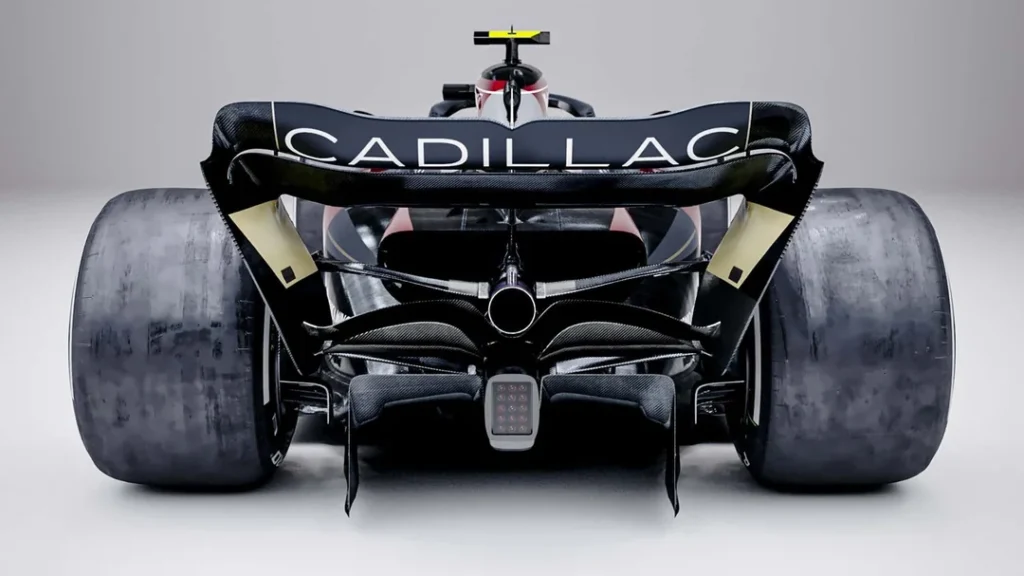
The 2026 Formula 1 engine regulations promised a new era: greener, more electric, more competitive. But less than two years from launch, the blueprint is buckling. Delays, conflicting priorities, and a growing governance vacuum now cast doubt on whether this reset will unite the paddock or fragment it even further. Beneath the surface, F1 isn’t just grappling with engine specs—it’s wrestling with its identity.
GM Steps Back: A Delay with Deeper Implications
General Motors’ decision to delay its Cadillac-branded F1 engine entry to 2029 is not simply a technical recalibration. It’s a strategic pause that underscores the political instability surrounding new entries. While GM’s development is reportedly ahead of expectations, early dyno tests are underway, rushing to meet 2026 would likely mean launching with an uncompetitive product and an uncertain team partner in Andretti Global.
The delay signals more than caution, it reflects a cold assessment of F1’s entry barriers. Why invest hundreds of millions in an engine program if there’s no guaranteed seat at the table? Without confirmation from Formula One Management (FOM), Andretti’s grid slot remains in limbo, and GM has little incentive to accelerate into a dead-end.
This decision also highlights the lack of incentive structures for new power unit suppliers. F1 wants new players, but refuses to lower the drawbridge. Until that changes, even well-resourced OEMs like GM will think twice.
Convergence: Parity or Parody?
To avoid another era of engine domination akin to Mercedes in 2014–16, the FIA has proposed a convergence mechanism. This would allow underperforming engine suppliers to make targeted gains post-launch, potentially through tweaks to fuel flow or electric deployment. On paper, it’s a safeguard against imbalance. In practice, it’s a philosophical shift.
For a sport that has long prided itself on “may the best engineer win,” introducing performance equalization blurs the competitive line. F1 is dangerously close to managing competition instead of enabling it. There’s a thin line between convergence and control, and the FIA is inching toward the wrong side of it.
This isn’t about refusing progress; it’s about refusing shortcuts. Giving slower engines a boost after the fact feels less like foresight and more like an insurance policy for bad design. It might prevent another runaway champion, but at what cost to meritocracy?
The Robert Reid Reflection: A Missing Compass
Into this chaos stepped Robert Reid, recently resigned FIA Deputy President for Sport. His Substack essay was not a direct critique, but it landed like one. In it, Reid lamented motorsport’s tendency to “race forward without stopping to look back,” calling for stronger heritage storytelling, better fan engagement, and leadership grounded in purpose, not control.
His words read like a quiet indictment of the current regime. The subtext was clear: the FIA isn’t just facing a regulatory crisis, it’s suffering a leadership void. Reid’s call for more meaning, more humanity in the sport, couldn’t have come at a more relevant moment.
He didn’t say he’s running for FIA President in December. But he didn’t have to.
His essay offered what’s been missing from the current administration: a cohesive vision. Not just of where F1 should go, but why it’s going there.
A Sport in Tension
Formula 1 is trapped between competing impulses: innovation vs. accessibility, performance vs. fairness, dominance vs. spectacle. The GM delay underscores the difficulty of onboarding new manufacturers. The convergence debate reveals confusion over what “competition” really means. Reid’s departure adds a final layer, without leadership that inspires, the rest is just noise.
F1 wants to be the future of motorsport, but it’s being held back by the very structures meant to enable it. Until it answers one fundamental question, is this a sport where the best rise or a show where everyone floats? The 2026 reset risks becoming an expensive identity crisis.
The road to 2026 isn’t just about kilowatts and fuel flow. It’s about trust. And right now, too many players, manufacturers, fans, even former leaders, aren’t convinced the FIA knows where it’s going.
